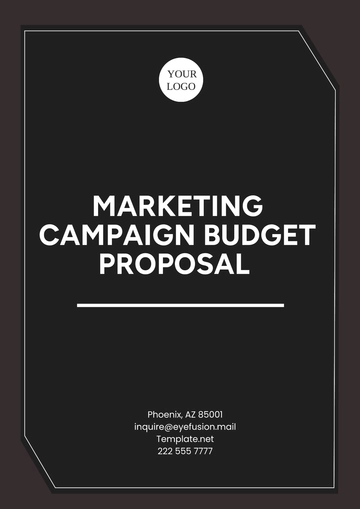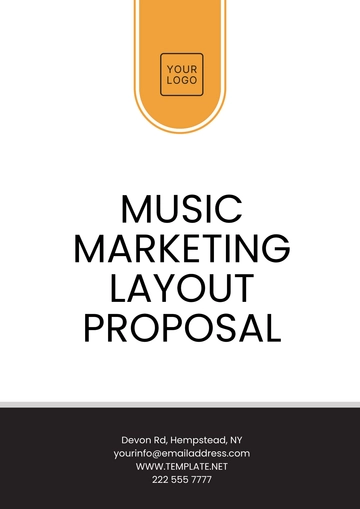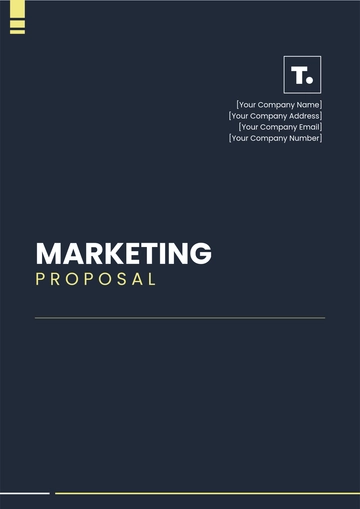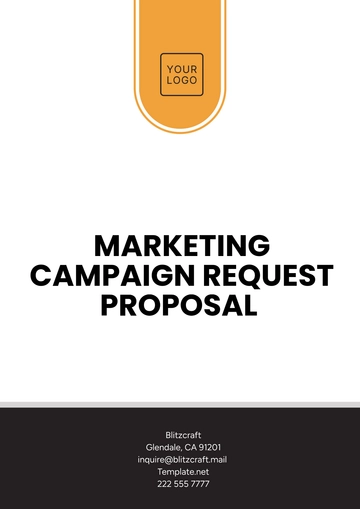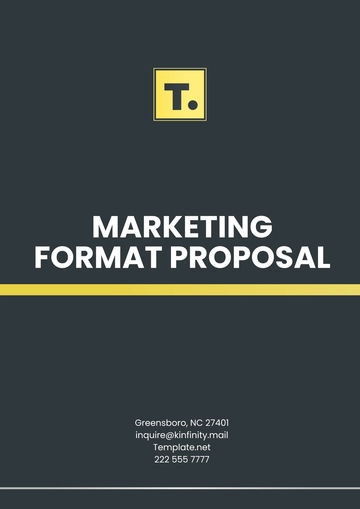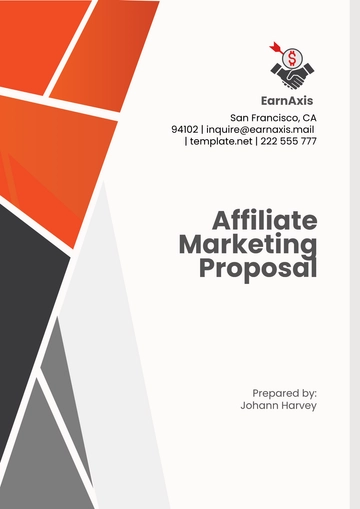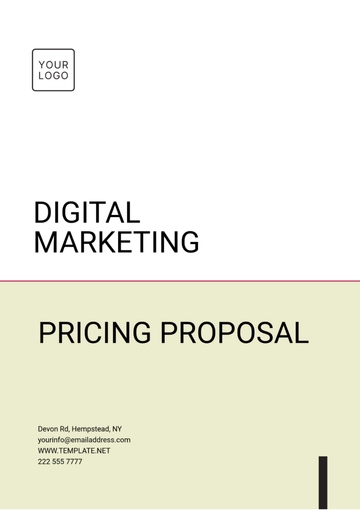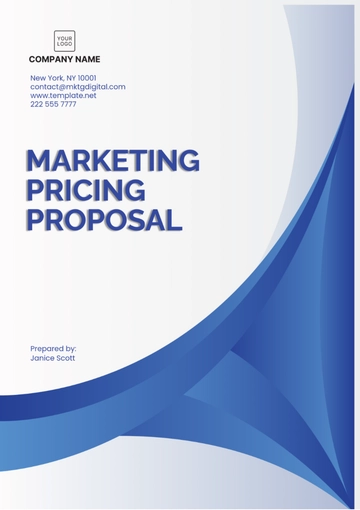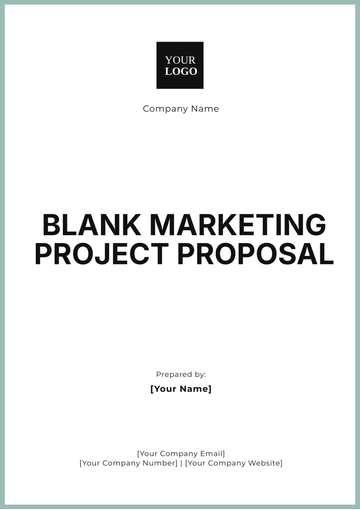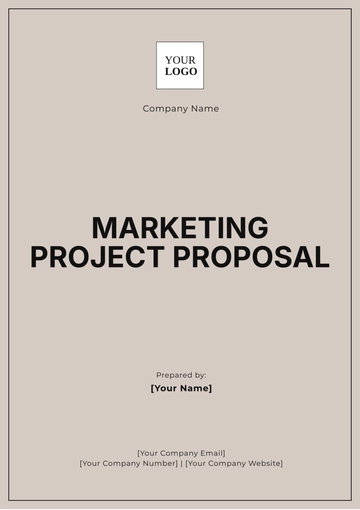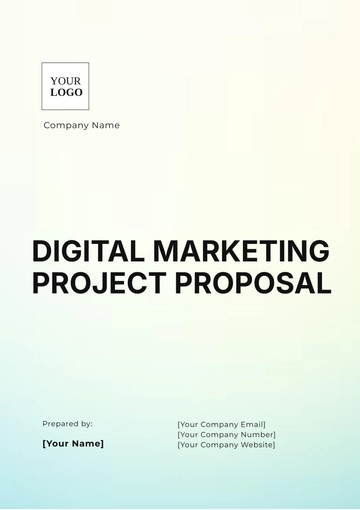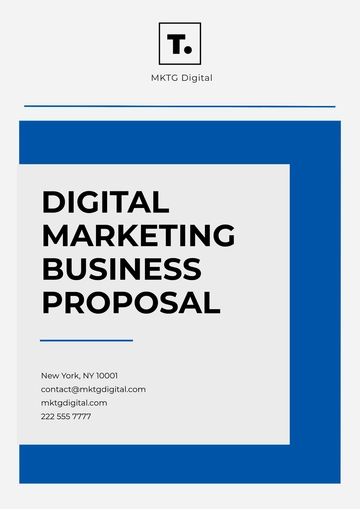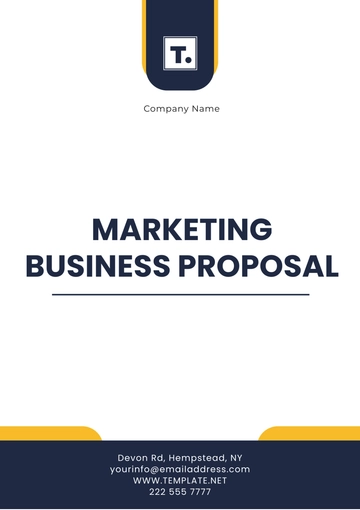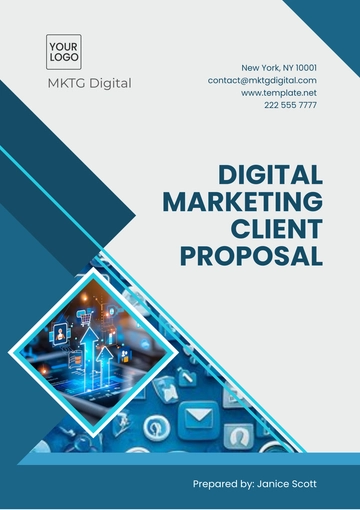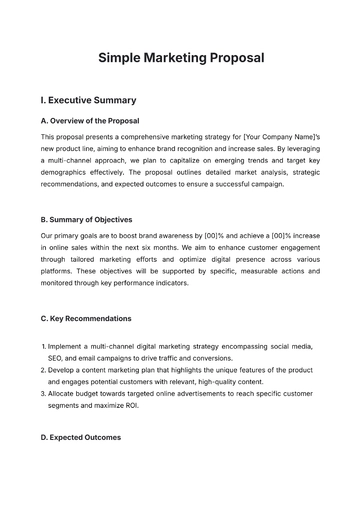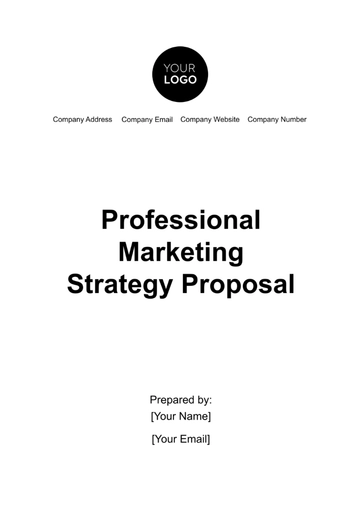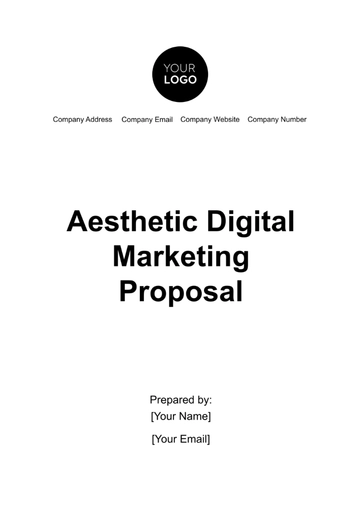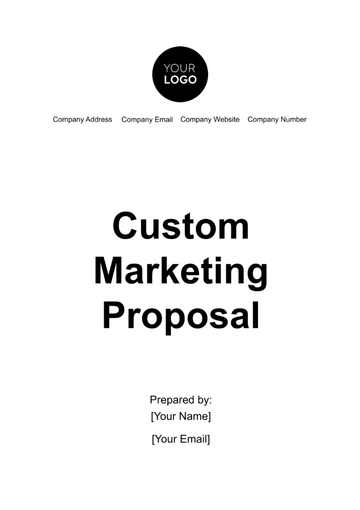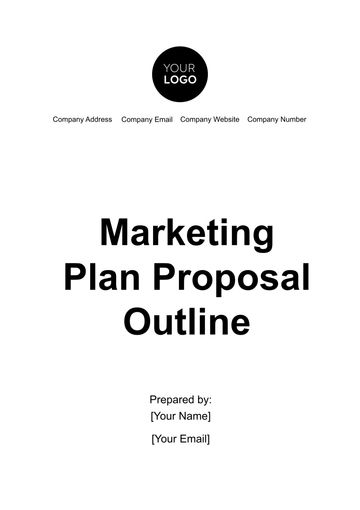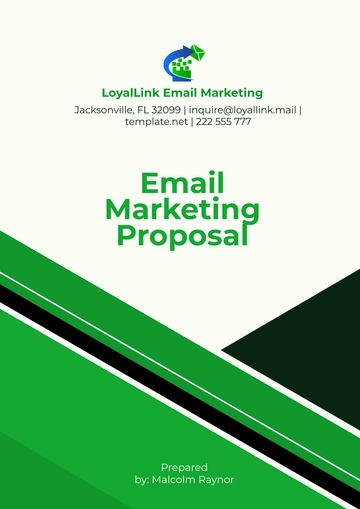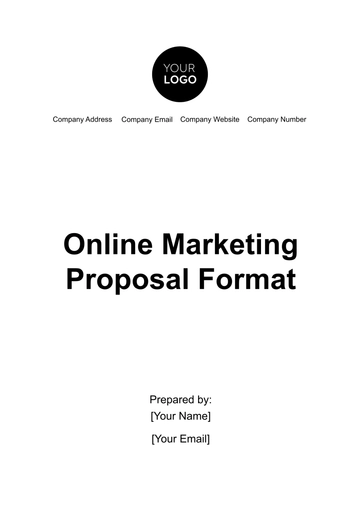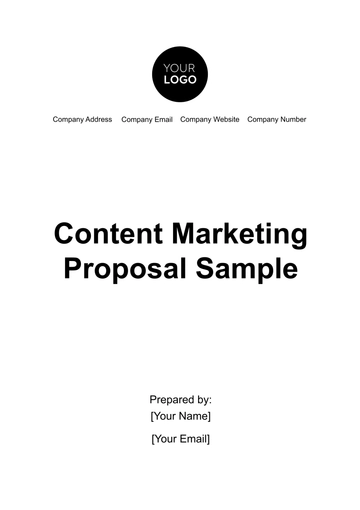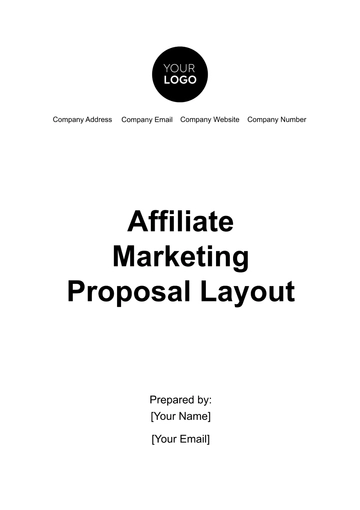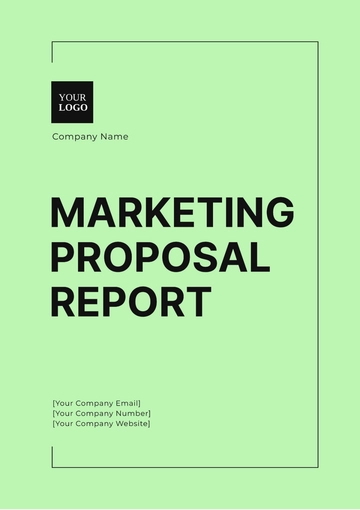Free Email Marketing Proposal for Budget Allocation
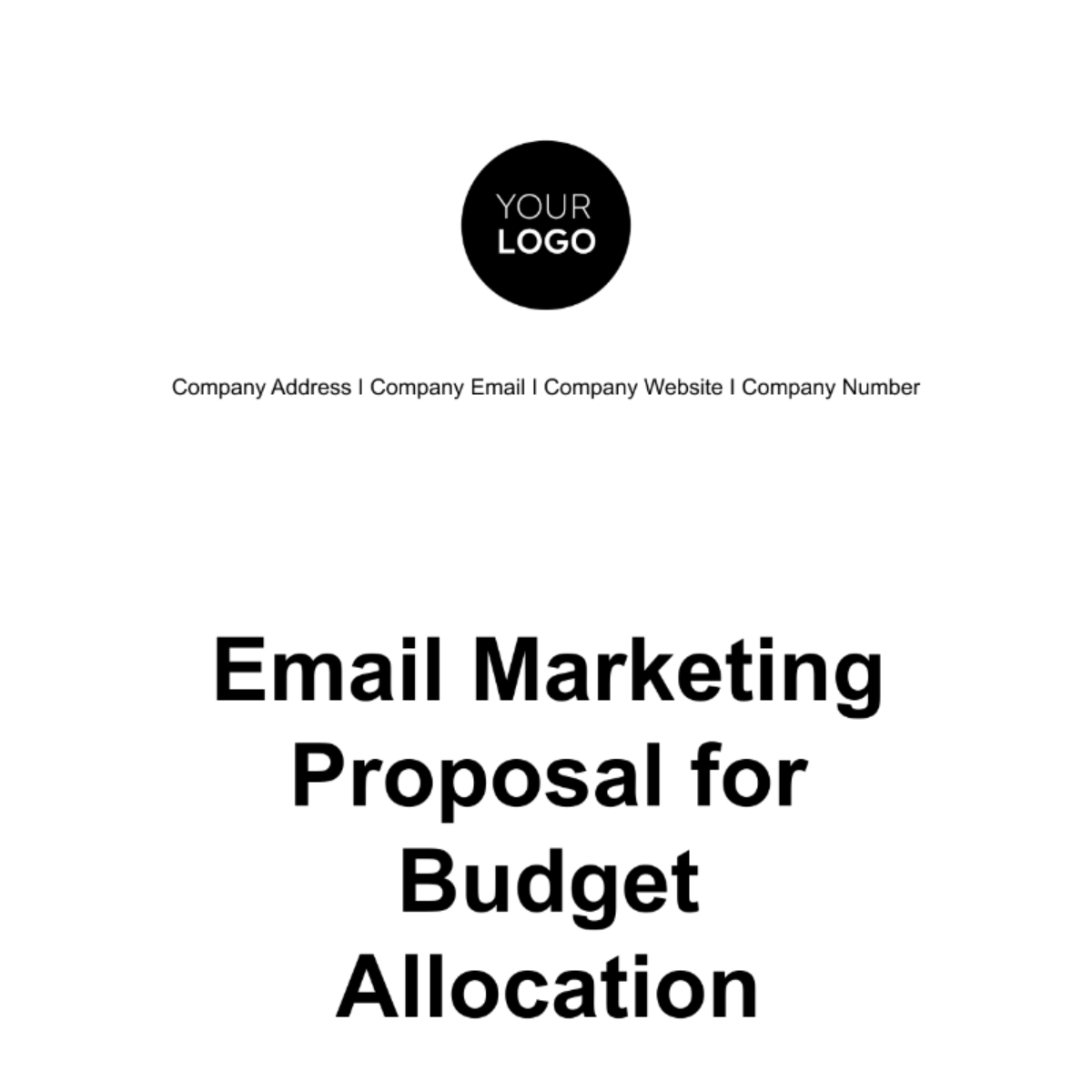
I. Executive Summary
In an ever-evolving digital landscape, email marketing remains a powerful tool for customer engagement and revenue generation. As we embrace the year [Year], we recognize the critical role email marketing plays in our marketing strategy. This proposal outlines our strategy and budget allocation to enhance our [Year] marketing efforts through email marketing.
Email marketing, when executed effectively, has the potential to deliver personalized and valuable content directly to our customers' inboxes. This approach allows us to deepen customer relationships, increase brand loyalty, and drive sales. It's imperative that we invest in the necessary resources to harness the full potential of email marketing in the [Year]s.
II. Campaign Strategy
Strategy Element | Description |
Audience Segmentation | Segment email list based on demographics, behavior, and purchase history. |
Content Development | Create high-quality, engaging content, including newsletters, product updates, and promotions. |
Personalization | Implement personalization techniques for subject lines, greetings, and content. |
A/B Testing | Regularly conduct A/B tests to refine campaign elements and improve performance. |
Automation | Use automation for onboarding, nurturing, and post-purchase follow-ups. |
Analytics and Reporting | Monitor and analyze campaign metrics for data-driven decision-making. |
A. Audience Segmentation
One of the core principles of our email marketing strategy is audience segmentation. To maximize the impact of our email campaigns, we will segment our email list into distinct groups based on demographics, behavior, and purchase history. This enables us to deliver highly targeted and relevant content to different customer segments, increasing engagement and conversion rates. For instance, new customers will receive onboarding emails, while loyal customers will receive exclusive offers tailored to their preferences.
Action Plan:
Data Analysis: Begin by analyzing customer data to identify key demographic characteristics, purchase history, and behavioral patterns.
Segment Creation: Create distinct customer segments based on data analysis, such as first-time buyers, repeat customers, and high-value customers.
Segment-Specific Content: Develop content tailored to each segment's interests and needs, ensuring relevance and engagement.
B. Content Development
High-quality content is at the heart of successful email marketing. To ensure our messages are informative, engaging, and valuable to our subscribers, we will allocate resources for content creation, graphic design, and copywriting. This investment in content will help us establish ourselves as a trusted source of information in our industry.
Action Plan:
Content Calendar: Create a content calendar outlining the type of content to be developed over the year, including newsletters, product updates, and promotions.
Content Creation Team: Assemble a content creation team consisting of writers, graphic designers, and copywriters to produce high-quality, engaging content.
Content Review: Implement a thorough content review process to ensure accuracy, alignment with brand messaging, and engagement potential.
C. Personalization
Personalization is a cornerstone of effective email marketing. By implementing personalization techniques, we will make each email recipient feel valued and recognized as an individual customer. Personalization will extend to the subject lines, greetings, and content within the emails. This approach builds trust and increases the chances of conversion.
Action Plan:
Personalization Parameters: Define parameters for personalization, including recipient's name, previous purchases, and location.
Data Integration: Ensure seamless integration of customer data into email marketing software to support personalization.
Dynamic Content: Use dynamic content elements to create emails that adapt to individual recipient profiles.
D. A/B Testing
Continuous improvement is key to our strategy. To achieve this, we will conduct regular A/B testing. These tests will help us refine our email campaigns and ensure data-driven decisions to optimize open rates, click-through rates, and conversion rates. We'll experiment with different elements, such as email timing, subject lines, and call-to-action buttons, to identify what resonates best with our audience.
Action Plan:
Test Hypotheses: Start by formulating clear hypotheses to test. For example, test the impact of different subject lines on open rates.
Test Segmentation: Conduct A/B tests on various segments to determine the most effective approach for each.
Data Analysis: Analyze test results and draw insights to inform future campaign optimizations.
E. Automation
Efficiency and consistency are crucial in email marketing. We will implement email automation for onboarding, nurturing, and post-purchase follow-ups. Automation streamlines our communication process and ensures that no customer falls through the cracks. It also enhances the overall customer experience by delivering timely and relevant content.
Action Plan:
Customer Journey Mapping: Map out customer journeys, including onboarding, lead nurturing, and post-purchase follow-ups.
Automation Software Selection: Choose and implement a robust automation software that supports customer journey automation.
Content Automation: Create and automate content sequences for each stage of the customer journey.
F. Analytics and Reporting
To gauge the effectiveness of our email marketing campaigns, our team will regularly monitor and analyze campaign metrics. We will use cutting-edge analytics and reporting tools to provide insights that inform our strategies for continuous improvement. These insights will help us make data-driven decisions and adjust our approach as needed.
Action Plan:
Data Collection Tools: Implement analytics and tracking tools to gather relevant campaign data.
Regular Reporting: Develop a schedule for regular reporting and analysis of key performance metrics, including open rates, click-through rates, conversion rates, and engagement trends.
Data-Driven Decision-Making: Use the insights gathered from reporting to make data-driven decisions, including refining content, segmenting audiences, and adjusting personalization parameters.
III. Budget Allocation
Budget Category | Annual Allocation | Description |
Email Marketing Software | $10,000 | Investment in a top-tier email marketing platform for campaign management. |
A. Email Marketing Software
Our email marketing software is the cornerstone of our campaign management. It allows us to efficiently manage email campaigns, segment the audience, and track performance metrics. We have allocated $[00,000] annually for this essential software.
B. Content Creation
High-quality content is fundamental to our email marketing success. This budget of $[00,000] annually covers content creation, graphic design, and copywriting to ensure we deliver compelling and informative messages.
C. Staffing
A significant portion of our budget, totaling $[00,000] annually, is allocated to hire a dedicated email marketing specialist and support staff. A skilled team is crucial for executing and optimizing our email campaigns effectively.
D. Testing and Optimization
To maintain a culture of continuous improvement, we have allocated $[0,000] annually for testing and optimization. This budget will be used for A/B testing and other efforts to fine-tune our campaigns.
E. Analytics and Reporting Tools
Effectively monitoring and analyzing campaign metrics is essential. We have allocated $[0,000] annually for analytics and reporting tools to provide us with the insights required to make data-driven decisions.
F. Miscellaneous Expenses
Unforeseen circumstances can arise, and to be prepared for such situations, we have allocated $[0,000] annually in the miscellaneous expenses category. This budget ensures flexibility and adaptability.
IV. Expected Outcomes
Expected Outcomes | Projected Increase |
Increased Revenue | [00]% increase in revenue from email-driven sales. |
Customer Retention | [00]% increase in customer retention rates. |
Enhanced Brand Awareness | [00]% growth in brand awareness and customer loyalty. |
Data-Driven Insights | Valuable insights into customer behavior and preferences. |
A. Increased Revenue
We project a [00]% increase in revenue from email-driven sales. By delivering highly targeted and personalized content, we aim to improve conversion rates and drive higher sales through our email marketing campaigns.
B. Customer Retention
Our focus on improved customer engagement is expected to result in a [00]% increase in customer retention rates. By providing valuable and relevant content, we aim to strengthen the bond with our existing customers, encouraging them to stay loyal to our brand.
C. Enhanced Brand Awareness
Effective email marketing will not only drive sales but also reinforce our brand's presence in the minds of our customers. We anticipate a [00]% growth in brand awareness and customer loyalty, ultimately leading to more returning customers and higher brand recognition.
V. Conclusion
The [Year] Email Marketing Proposal for Budget Allocation is not just a document outlining our intent; it is the blueprint for our commitment to excel in the ever-evolving digital landscape. The strategies and budgets outlined in this proposal are designed to empower our marketing efforts and secure our place at the forefront of customer engagement and revenue generation.
As we look ahead to the year [Year], the world of marketing will be characterized by rapid technological advancements and shifting consumer behaviors. Email marketing, when leveraged strategically, becomes a critical bridge between our brand and our audience. We are fully prepared to harness the full potential of this channel to reach new heights.
Our Campaign Strategy, detailed with step-by-step action plans, will enable us to navigate this new era effectively. From audience segmentation to automation, we will execute each step with precision, ensuring that we connect with our customers in meaningful ways. Personalization will be our driving force, ensuring that every email sent is a personalized message, not just another communication.
Our Budget Allocation plan reflects a commitment to providing our teams with the tools and resources they need to execute the strategy effectively. We understand that investment is necessary to achieve our goals, and each budget category has been meticulously crafted to address specific needs.
The Expected Outcomes are not mere projections; they are our goals. We anticipate a [00]% increase in revenue from email-driven sales, a 10% increase in customer retention rates, a [00]% growth in brand awareness and loyalty, and valuable insights into customer behavior and preferences. These outcomes are achievable, and we are dedicated to making them a reality.
In the [Year]s, data will be our guiding star. The Analytics and Reporting tools in place will empower us with insights to make data-driven decisions. We are committed to a culture of continuous improvement, ensuring that our campaigns are always optimized for the best results.
We invite you to review this proposal in detail and provide your valuable feedback. Your insights and expectations are important to us, and we are ready to fine-tune this plan to meet your specific needs. Together, we can chart a course for success in the dynamic world of email marketing in the year [Year].
As we move forward, the future holds endless possibilities, and this proposal is our commitment to harnessing those possibilities. Email marketing, when executed with dedication and strategic thinking, will serve as a powerful catalyst for our growth and success.
We look forward to working collaboratively with you to implement this plan and make [Year] a landmark year for our marketing efforts. The journey begins now, and we're excited to embark on it together.
Marketing Templates @ Template.net
- 100% Customizable, free editor
- Access 1 Million+ Templates, photo’s & graphics
- Download or share as a template
- Click and replace photos, graphics, text, backgrounds
- Resize, crop, AI write & more
- Access advanced editor
Explore the Email Marketing Proposal for Budget Allocation Template on Template.net! This editable and customizable resource streamlines the proposal process. Tailor it effortlessly to your needs using our Ai Editor Tool. Maximize budget effectiveness and campaign success with this adaptable template. Elevate your email marketing strategy with precision and efficiency.
You may also like
- Business Proposal
- Research Proposal
- Proposal Request
- Project Proposal
- Grant Proposal
- Photography Proposal
- Job Proposal
- Budget Proposal
- Marketing Proposal
- Branding Proposal
- Advertising Proposal
- Sales Proposal
- Startup Proposal
- Event Proposal
- Creative Proposal
- Restaurant Proposal
- Blank Proposal
- One Page Proposal
- Proposal Report
- IT Proposal
- Non Profit Proposal
- Training Proposal
- Construction Proposal
- School Proposal
- Cleaning Proposal
- Contract Proposal
- HR Proposal
- Travel Agency Proposal
- Small Business Proposal
- Investment Proposal
- Bid Proposal
- Retail Business Proposal
- Sponsorship Proposal
- Academic Proposal
- Partnership Proposal
- Work Proposal
- Agency Proposal
- University Proposal
- Accounting Proposal
- Real Estate Proposal
- Hotel Proposal
- Product Proposal
- Advertising Agency Proposal
- Development Proposal
- Loan Proposal
- Website Proposal
- Nursing Home Proposal
- Financial Proposal
- Salon Proposal
- Freelancer Proposal
- Funding Proposal
- Work from Home Proposal
- Company Proposal
- Consulting Proposal
- Educational Proposal
- Construction Bid Proposal
- Interior Design Proposal
- New Product Proposal
- Sports Proposal
- Corporate Proposal
- Food Proposal
- Property Proposal
- Maintenance Proposal
- Purchase Proposal
- Rental Proposal
- Recruitment Proposal
- Social Media Proposal
- Travel Proposal
- Trip Proposal
- Software Proposal
- Conference Proposal
- Graphic Design Proposal
- Law Firm Proposal
- Medical Proposal
- Music Proposal
- Pricing Proposal
- SEO Proposal
- Strategy Proposal
- Technical Proposal
- Coaching Proposal
- Ecommerce Proposal
- Fundraising Proposal
- Landscaping Proposal
- Charity Proposal
- Contractor Proposal
- Exhibition Proposal
- Art Proposal
- Mobile Proposal
- Equipment Proposal
- Student Proposal
- Engineering Proposal
- Business Proposal

